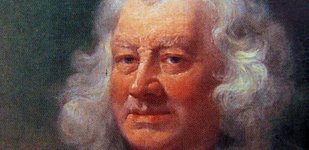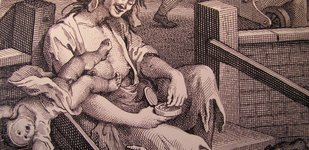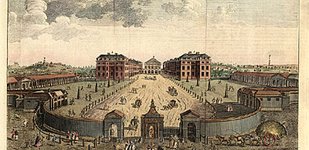The Captain and the Duchess
-and their 23,000 children
In the 1700s, as London's population doubled, so did the horrors of poverty. Increasing numbers of abandoned and unwanted babies were left dying or dead in London's streets. If handed to the parish nurse -the only social provision available beside the mother's family- a child stood less than a 1% chance of survival into adulthood. Thomas Coram, a plain-speaking captain with links to Boston, Mass. strongly objected to this moral torpitude. Single-handedly he started a campaign to change these children's -and their mothers' - prospects. It took over seventeen years to achieve royal assent for the creation of the Foundling Hospital (1739), London's first such institution.
The Hospital marked a step-change in the idea of civic philanthropy and welfare. With the significant involvement of William Hogarth and Georg Frideric Handel the Hospital became London's first interior public art gallery (a major factor in the creation of the Royal Academy of Arts) and the venue which finally established Handel's Messiah.
As its ambassador and erstwhile Director, I explore the extraordinary story as told today by London's Foundling Museum. - The story of mothers, children and a vast cast of characters -A story for our own times.
NB 2014 marks the 250th anniversary of William Hogarth's Death
-a suitable talk to commemorate the year


